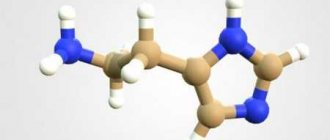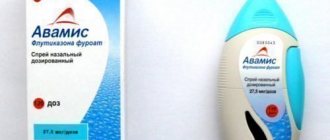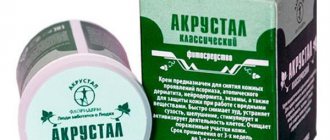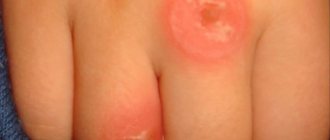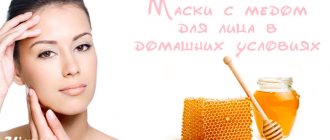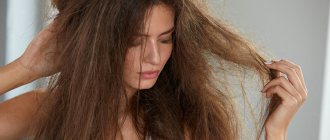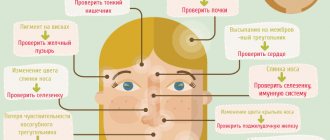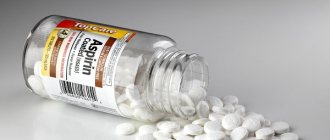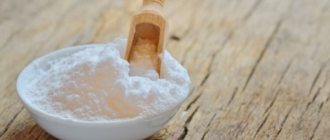Urticaria (urticaria, nettle fever) is a disease of an allergic nature. It is characterized by the appearance of large, itchy blisters and spots on the skin and mucous membranes. This anomaly is recorded in patients of different age categories. An intense lifestyle in modern cities contributes to the development of the disease, so the issue of treating urticaria at home in adults is becoming increasingly relevant .
Itching, hyperemia, local hyperthermia in the area of the rash are the main signs of urticaria in adults
The most effective folk remedies for treating urticaria in adults
Urticaria belongs to the category of allergic dermatitis.
A characteristic sign of the disease is redness and swelling of the skin. The blisters tend to merge and are very itchy. Hives can be triggered by medications, food allergies, worms, an individual reaction to ultraviolet rays, cold, dust, insect bites, as well as autoimmune pathologies and diseases of the digestive system.
In 40% of cases, the cause of the disease remains unclear. Treatment of mild urticaria in adults is carried out at home, so folk remedies for treating urticaria in adults are often used.
The main reasons for the development of urticaria
Let's look at this in more detail. Before we talk about what kind of treatment for urticaria with folk remedies exists, let’s look at the main factors that provoke the development of this disease. According to doctors, urticaria most often develops for the following reasons:
- consumption of certain foods;
- contact with various plants and chemicals;
- prolonged exposure to cold or extreme heat;
- exposure to ultraviolet radiation on the epidermis;
- pest bites;
- psycho-emotional stress;
- consequences of taking certain medications;
- intense physical activity;
- infectious diseases;
- diabetes;
- various forms of hepatitis;
- leukemia.
When an antigen enters the body, a large amount of histamine is released into the blood, which entails thinning of the blood vessels and the development of an edematous process in the choroid. The degree of clinical manifestations of urticaria depends on how intense these processes are. At first, the disease occurs in a latent form, however, in the absence of proper therapy, after just two months the acute stage begins. That is why it is very important to start treating urticaria with folk remedies as soon as possible.
If traditional medicine does not bring any results, then in this case it is recommended to undergo a comprehensive examination in the hospital, since there is a high probability that urticaria is caused by autoimmune disorders, metabolic disorders or malfunctions of the central nervous system. And in this case, self-medication will simply be useless and will not lead to anything good.
Folk remedies
For mild urticaria in adults, herbs can be used for treatment. Infusions, compresses, decoctions and ointments based on medicinal plants help to quickly get rid of the unpleasant symptoms of the disease.
They significantly reduce itching, soothe the skin, promote rapid elimination of histamine, and have a positive effect on the nervous system and sleep.
Attention! Acute urticaria with a severe rash, swelling of the nasopharynx, and attacks of suffocation requires urgent hospitalization. In this case, folk remedies can only be used to prevent relapse of the disease.
Compresses
The course of treatment is prescribed individually; generally, sore spots are treated until the symptoms disappear. Effective recipes:
- Grind the dry string, pour 15 grams of the product with boiling water (half a mug). After half an hour, strain and soak the compress in the broth. Apply to itchy areas three times a day.
- Pour a handful of beans with 500 ml of cold water and place on low heat for 1.5-2 hours. Use the decoction for rubbing or compresses 3 to 7 times a day.
- Brew a mixture of 30 grams of birch buds and leaves with 100 ml of boiling water and leave for an hour. Wet the swab and apply to the skin every 12 hours.
- Take 15 grams of fireweed leaves per glass of water and simmer for 10 minutes. Apply lotions three times a day.
- Brew wormwood (30 grams per 150 ml), strain after 40 minutes. Add about a glass of flour to form a soft cake. Apply to affected areas 2-3 times a day.
- If there is severe itching, grate raw potatoes, squeeze, and soak gauze in the juice. After removing the bandage, wash the skin with clean water.
- Take an equal amount of fresh plantain and yarrow leaves, chop finely and wrap in gauze. Apply a compress to severe irritation up to 4 times a day.
- You can quickly relieve itching with dill. It should be finely chopped, squeezed out the juice, and moistened with a cotton swab, applied to the itchy area until relief occurs.
- Peel fresh beets, cut into cubes and add clean water (1 to 5).
Advice. It is not recommended to use the same recipe for more than 2 weeks. If the urticaria does not go away, you need to change the remedy.
Baths
Baths made from decoctions of medicinal plants are very effective. For acute urticaria, the procedure should be carried out in the morning and evening, for chronic urticaria - once a day.
The duration of the procedure is from 10 to 20 minutes.
- Grind the burdock root, add cold water (100 grams per 500 ml of water), put on fire for 15 minutes. After cooling, strain and pour into the bath.
- Mix in a large container 3 tablespoons of oak bark, string, sage, chamomile, celandine, juniper, valerian roots, elderberry and nettle.
Advice. A large amount of herbs is used to prepare baths. To prevent treatment from costing you too much, you can collect and prepare plants yourself.
Creams, ointments
Viscous products act on the skin longer than lotions. It is recommended to store them in the refrigerator for no longer than a week. Most often used for recurrent, chronic urticaria. Recipe options:
- Add 50 grams of dried St. John's wort flowers to 100 ml of unrefined sunflower oil and place in a water bath for an hour. Leave for several days in the refrigerator. Lubricate the affected areas after the bath. Shake before use.
- Crush fresh cranberries. Combine the resulting juice with pharmaceutical Vaseline in a ratio of 1 to 3. Use three times a day.
- Take finely chopped Kalanchoe leaves, add the same amount of honey, mix thoroughly, leave for 7 days in a warm room. Avoid direct sunlight. Use the ointment morning and evening. Kalanchoe can be replaced with aloe.
- For cold urticaria, the skin can be lubricated with boiled olive or sunflower oil.
The first time a folk remedy should be used very carefully.
The composition should be applied for 1-2 minutes. If there is no negative reaction within 24 hours, then this recipe is suitable for you.
This video will tell you how to treat hives with folk remedies:
Products for internal use
When you have hives, you need to solve the problem from the inside. To quickly remove histamine, you can drink diuretic herbs, to improve digestion, a decoction of oats, wheat bran or flax seeds, to support the liver, dandelion roots, milk thistle fruits.
- Mix birch leaves, rose hips, chamomile flowers. Prepare and take as tea.
- Wash the dandelion roots, chop finely, and simmer for 10 minutes over low heat (a handful per glass). Drink 30 ml three times a day.
- Grind the blackcurrant leaves, brew and let it brew for a couple of hours. Drink a quarter glass before each meal.
- Prepare a mixture: immortelle, mint, tansy, St. John's wort, clover. Brew a tablespoon of the product with boiling water and drink instead of tea.
- Grate fresh celery and squeeze out the juice. Drink a teaspoon fresh in the morning and evening.
- Wash the raspberry roots and chop them. Add 30 grams of product to 300 ml of boiling water and boil for 15 minutes. Wait for the broth to cool, then strain. Take 250 ml before meals.
- Brew a tablespoon of yarrow (leaves), strain after cooling. Divide a glass of decoction into three doses.
- To treat nervous urticaria, dissolve 15 ml of valerian and hawthorn tincture in 100 ml of water. Drink an hour before bedtime.
- Grind the licorice root, take the product into a teaspoon, chew it, and drink plenty of water. Take morning and evening.
- Grate the horseradish root and squeeze out the juice. Before use, dilute with honey. Reception – 3 times a teaspoon.
- Brew dry mistletoe like tea and leave for 10-14 hours. Drink a third of a glass in the morning on an empty stomach.
- Pour passionflower tincture into a glass of water (30 drops) and drink in one gulp. Take three times a day.
- Make a mixture: birch buds, chamomile and St. John's wort flowers, rowan fruits, rose hips, dandelion roots, stevia herb, strings, mint, violets and strawberries. Brew as tea, take morning and evening.
Advice. To improve the taste of decoctions, you can add linden, mint, and chamomile to recipes.
Treatment rules
To avoid relapse, you should adhere to the following rules:
- Wear clothes only from natural fabrics.
- At the beginning of treatment, adhere to a strict diet.
- Introduce new foods gradually (1-2 weeks after symptoms subside).
- Avoid nervous tension and stress.
- Drink enough water (1.5-2 liters).
- Make sure your bowel movements are regular.
- If you feel worse, consult a doctor.
Urticaria will go away faster if you take Activated Carbon, Phytosorbent, Polysorb, and Smecta together with folk remedies.
For unbearable itching, any antiallergic drug will help - Suprastin, Tavegil, Diazolin, Diphenhydramine.
How to treat hives at home, watch this video:
Ointments based on folk recipes
Ointments will help get rid of the manifestations of the disease in adults, eliminate symptoms, and help eliminate inflammation.
- Ointment with celandine. The dried herb of the plant (two teaspoons) is crushed and mixed with butter or melted lard. A heated tablespoon of the remedy is applied to the problem area and lightly rubbed in. The product must be absorbed, remove the residue with a napkin.
- Ointment with string is also successfully used as a cure for allergies. The crushed raw materials (two teaspoons) are thoroughly mixed with rendered lard. We use it as in the previous recipe.
- Yarrow ointment is prepared and used in the same way.
Curing hives, getting rid of allergies and rashes is not so difficult - you need to be patient and persistent! It must be remembered that its symptoms may resemble those of other diseases. Therefore, before treating the disease, consult a doctor, and only then begin treatment at home!
Causes of urticaria
Several different root causes can play a role in the appearance of urticaria, the main one of which is considered to be an allergic reaction of the body to contact with a pathogen, some food or an insect bite. Other factors in the occurrence of such a disease are also noted. This:
- Heredity
- Autoimmune reaction
- Neurology
- Chronic diseases of the gastrointestinal tract, endocrine or lymphatic system
- Helminthiasis
- Infectious diseases
- Oncology
Diet as a method of treatment
Since in most cases urticaria is triggered by allergenic foods, it is very important to remove from the diet those foods that cause an allergic reaction. The diet will help avoid relapses of the disease. Those who suffer from urticaria are advised to adhere to the following rules:
- exclude from the diet foods containing preservatives and dyes;
- For cooking, use butter or cold-pressed vegetable oil;
- consume more fermented milk products (natural yogurt without additives, kefir, homemade cottage cheese);
- give preference to lean meats;
- limit the consumption of fruit yoghurts and hard cheese;
- give up sausages;
- limit the consumption of tomatoes, mushrooms, paprika, peas, spinach, sauerkraut;
- exclude the consumption of any fruits and berries, as well as juices from them, during a relapse;
- do not add spices, seasonings and sauces to dishes;
- give up marinades, canned food and pickles;
- exclude nuts (especially peanuts), eggs, whole milk, honey, chocolate and cocoa from your diet;
- do not drink sugary carbonated drinks;
- completely stop drinking any alcohol.
Urticaria is one of the most common dermatological diseases. Have you ever encountered this disease? Share with our readers which remedy was most effective for you.
Symptoms
There are typical manifestations of urticaria, by which this disease can be accurately identified. These include:
- A characteristic rash that appears quickly enough and goes away instantly with proper treatment.
- Appearance of pinkish blisters
- Itching
- Redness
- Edema
- High body temperature, weakness
- Headache
Depending on the type of disease, symptoms may disappear after a few hours or last much longer with chronic manifestations of the disease.
Diagnostics
To make a correct diagnosis, it is enough for a dermatologist to conduct a visual examination of the patient and listen to complaints. To determine the root cause of the disease, an allergy test, serological diagnosis, laboratory blood test, test for intestinal dysbiosis or other provocative tests are performed. If urticaria lasts more than 6 weeks and is chronic, then additional examinations are carried out to exclude or confirm systemic pathologies. In this case, consultation with other specialists may be necessary.
A few words about nutrition
What to do if you have an allergy? Treatment of urticaria with folk remedies must be combined with adjustments to your daily menu. Only a doctor should select a diet, since it largely depends on the form and type of urticaria. If the disease has developed into an acute form, then the first step is to prescribe therapeutic fasting, which lasts 3 days, after which the patient is transferred to proper nutrition. It is very important to maintain water balance and try to drink plenty of fluids every day.
Products are selected individually for each patient. To begin with, they are given them in small quantities, after which the response from the body is observed. If there are no signs of allergy, then they remain on the menu. At the first signs of urticaria, intestinal cleansing is performed, after which diet adjustments continue.
The permitted products include the following:
- boiled potatoes;
- any porridge;
- lean meat, steamed;
- boiled vegetables;
- dairy products;
- pasta.
As for the prohibited ones, you should completely avoid sweets, smoked, pickled, canned, soda, alcohol, seafood and milk.
Types of urticaria
Depending on the duration of the disease, there are acute forms (lasting up to 6 weeks) and chronic forms (with symptoms that appear for more than 6 weeks). Based on the reasons that caused urticaria, the following types are distinguished:
- Cold
- Thermal
- Demographic
- Vibrating
- Contact
- Solar
- Cholinergic
In addition to physical forms, the following subtypes are distinguished based on the manifestation and form of the disease:
- Papular
- Anaphylactoid
- Psychogenic
- Idiopathic
- Angioedema
- Infectious
- Pigmented
- Systemic mastocytosis
- Endocrine
- Hereditary amyloidosis
- Cutaneous form of vasculitis
- Provoked by neoplastic processes
Patient Actions
If this disease occurs, it is necessary to pay attention to the circumstances under which the rash appeared. It is recommended to exclude the allergen in order to prevent recurrence of the disease, as well as to prevent complications or chronic form of urticaria. It is advisable to adhere to a diet during treatment so as not to provoke the development of the disease. You need to seek help from a dermatologist to identify the pathogen and receive optimal treatment. You can alleviate your condition using traditional methods of treating the disease.
Rules for collecting grass
Medicinal herbs should be collected in ecologically clean areas.
The series blooms from late June to early September, so that the collected grass does not contain allergenic pollen, it is best to collect in mid-June.
In addition, you should remember the rules for collecting and storing grass:
- It is recommended to collect the string only in ecologically clean areas, away from highways.
- It is necessary to collect the plant in the morning, after the dew has dried. It is advisable that the weather outside is dry and windless.
- The collected grass should be laid out on paper or cloth and stored in a cool, dark place out of reach of children.
- After drying, place the string in special paper bags or boxes. It should be remembered that the shelf life of plants should not exceed two years.
- To find out how dry the plant is, you need to try to break the stem. If you can do this without difficulty, the grass is ready.
In order not to worry about the quality of plant raw materials, you can grow a string yourself in your garden or dacha, observing all the necessary conditions.
Treatment of urticaria with folk remedies
Various external remedies based on medicinal herbs help relieve unpleasant symptoms when urticaria occurs. Baths and medicated ointments speed up the healing of the skin, removing itching, redness and blisters. Compresses and lotions made from medicinal decoctions and infusions act safely and gently on the affected area and promote a speedy recovery. It is important to strictly adhere to the dosage indicated in the recipe. You cannot use folk remedies for treating urticaria uncontrollably, as this can only aggravate the problem.
Baths from wild rosemary infusion
To relieve symptoms when urticaria appears, you can make baths or lotions based on wild rosemary infusion. To do this, the inflorescences of this plant are harvested, dried and crushed. Then you need to pour 100 g of the finished substance into 2 liters of boiling water and place it in a warm place, covered with a towel. After a couple of hours, the finished solution is filtered through gauze or a fine sieve. You can add this product to a warm, pre-prepared bath or use it for local rinsing of the affected area.
White mulberry for urticaria
To get rid of urticaria rashes, as well as to reduce an allergic reaction, you need to prepare a cream based on white mulberry bark. The raw materials are pre-prepared, cleaned, washed and crushed to a powder state. Then 2 tablespoons of this mass are poured into 100 ml of vegetable oil and mixed until smooth. The finished mixture is sealed in an airtight jar and refrigerated for several days so that it can absorb the beneficial properties. Before use, the cream must be mixed well again, and then applied to the affected area in a thin layer. Residues are carefully removed with a cotton swab.
Scutellaria baicalensis compress
To prepare the medicine, you need to collect, dry and finely chop the Baikal skullcap herb. For a compress, pour 35 g of the finished mixture into 100 ml of boiling water and leave in a warm place for about 10 minutes. After this, the solution is filtered, a piece of sterile bandage is moistened in it and applied to the areas of the skin covered with the rash. You can secure the compress on top with a dry bandage or piece of cloth and leave it for 4 hours.
Eleutherococcus senticosus for skin cleansing
It is necessary to collect flowers, leaves and grass of Eleutherococcus senticosus, dry and grind to a powder. After this, 50 g of the finished raw material is brewed in 200 ml of boiling water and left for several minutes, tightly closing the container. The finished solution is filtered, then tightly closed and stored in the refrigerator. Before applying the product, it is recommended to warm it up slightly. Use it by gently rubbing into the affected skin.
Bath with rosemary leaves
A bath based on rosemary leaves not only helps relieve the discomfort of hives, but also speeds up the healing process. To do this, 50 g of finely chopped or ground raw materials in a blender are poured with 1 liter of water and brought to a boil, then simmered over low heat for about another half hour. The finished broth is filtered and poured into a warm bath. It is recommended to carry out this procedure for 15 minutes in the morning, after eating.
Infusion of the tripartite series
The series is a well-known remedy that helps get rid of various types of rashes. For hives, this medicinal plant helps relieve itching, redness, and reduce blisters. To do this, 100 g of chopped herb is poured into 400 ml of boiling water and placed in a steam bath for a quarter of an hour. Then the solution is infused for another 20 minutes, allowed to settle and filtered. Add boiled water to a volume of 500 ml. You can take the decoction internally or use it for compresses and lotions, applying gauze soaked in it to problem areas of the skin.
Celery medicinal mixture
You need to pour 1 cup of fresh chopped celery (greens) with vinegar and add 1 dessert spoon of salt. All components of this mixture are thoroughly mixed until the salt is completely dissolved. Use the mixture for application to affected skin for urticaria.
Decoction of white claret
The leaves of the alba are often used as a medicine to treat various skin diseases of an allergic nature. To make a healing decoction, you need to pour 15 g of dried and crushed raw materials with 1 glass of boiling water and put on low heat. Bring the solution to a boil, then boil for about 5 minutes over low heat. The finished product is cooled, filtered and used as lotions or compresses.
Nightshade bittersweet for urticaria
To prepare a medicine for treating skin with hives, you need to grind the dried leaves of bittersweet nightshade to a powder. Then 0.5 g of this raw material is mixed with petroleum jelly.
Compress from princely leaves
The leaves of the princess are first prepared, for which they are finely chopped to obtain a mushy consistency. Apply this mixture to a bandage and apply it to the area where there is a rash from hives. This remedy helps to cope with the allergic nature of the disease, relieves itching and redness.
Useful properties of the string
The string has a lot of useful properties.
The string is an annual herbaceous plant that has antibacterial, anti-inflammatory, diuretic and diaphoretic properties. The healing properties of the plant are very diverse, because it contains a large number of useful elements and vitamins:
- Vitamin A - helps improve vision, as well as rapid healing and regeneration of the skin after wounds and cuts.
- Vitamin C - strengthens the body's natural defenses, normalizes the production of hormones, for example, hydrocortisone, which prevents anti-inflammatory processes and has an antihistamine effect.
- Essential oils – help with sleep disorders and nervous disorders, exhibit disinfectant and anti-inflammatory properties.
It is recommended to use the sequence for many diseases, since it has many advantages:
- Restores the body's natural strength.
- Improves the functioning of the circulatory system.
- Helps stabilize the emotional state during stress, neuroses and panic attacks.
- It has antipyretic, expectorant, antiseptic and diaphoretic effects. Quite often, a series is prescribed for ARVI and pathologies of the urinary system.
- Accelerates metabolic processes.
- Promotes healing and drying of wounds and scratches.
- Positively affects the functioning of the gastrointestinal tract.
Important! For treatment, it is necessary to use the tops of stems, side shoots and large leaves of the tripartite series. Other types may not be beneficial or may be harmful to health.
For treatment, only a tripartite sequence is used
For what types of allergies is a series used?
An allergic reaction can occur in the form of redness and rashes on the skin, metabolic disorders and deterioration of the immune system. The source of an allergy can be anything:
- Flowering trees and plants.
- Pet hair, dust.
- Chemicals.
- Cold.
- Food.
In these cases, a series of allergy treatments helps well, namely:
- Eliminates redness, irritation and itching of the skin.
- Relieves swelling.
- Prevents the occurrence of rashes.
- Has antibacterial and anti-inflammatory effects.
- Improves metabolism.
- Restores damaged skin areas.
Prevention of urticaria
As a preventive measure, it is recommended to eat rationally, using healthy, non-allergenic foods. This is especially true for pregnant women and young children. If the cause of the disease lies in other factors, then they should be identified and tried to be avoided. It is recommended to promptly treat nervous and infectious diseases, use repellents to protect against mosquito bites, use proven washing powders, high-quality clothing and other household items that come into contact with the skin.
Contraindications
You cannot use traditional methods of treating urticaria uncontrollably, as this can cause a worsening of the condition. Before using ointments, compresses and baths based on medicinal herbs for the treatment of pregnant women, nursing mothers and young children, you should definitely consult with your doctor. Some medicinal plants can cause an allergic reaction due to individual intolerance. If the condition worsens, a burning sensation appears, increased itching and other symptoms, you should immediately stop treatment with traditional methods and consult a dermatologist.
Can the series be used by pregnant and nursing mothers?
Tea from the series can be taken during pregnancy.
During pregnancy, the state of the immune system worsens, as a result of which all exacerbations of diseases are experienced more strongly by the body. Expectant mothers are often prohibited from using medications, as this can affect the health of the woman and child; in this case, herbal medicine comes to the rescue. It will help eliminate the symptoms of an allergic reaction, improve the functioning of internal organs, relieve nervous tension and calm down.
There are several ways to use the series for allergies:
- Use of compresses.
- Therapeutic baths with the addition of infusions.
- Tea or decoctions with a weak concentration of herbs for internal use.
- Rinsing the nasal canals with the prepared infusion for allergic rhinitis.
Women who are breastfeeding can also use the methods listed above. After the first use of the decoction, you need to monitor the baby’s well-being for 24 hours. You also need to be careful when using water procedures - before taking a bath, you need to moisten the skin with the prepared decoction; if after 10 minutes there is no negative reaction, you can begin health-improving manipulations.
Although string is a fairly safe plant, you should consult a doctor before using it.
Urticaria: symptoms and treatment with folk remedies
If small blistering red rashes that itch appear on the skin or mucous membrane, then this is urticaria.
Urticaria (lat. urticaria)
, sometimes called nettle fever, nettle rash, urticaria - a skin disease, dermatitis of predominantly allergic origin, characterized by the rapid appearance of very itchy, flat-raised pale pink blisters (lat. urtica), similar in appearance to blisters from a burn nettle.
Urticaria causes
Hives may occur if you:
- took some traditional medicines, food additives, preservatives;
- came into contact with plants, for example, touched nettles;
- ate foods that cause allergies: strawberries, oranges, cheese;
- intensely engaged in physical exercises during sports training;
- took hot water procedures;
- received severe emotional shock;
- wore tight shoes, clothes, accessories (even a watch strap can cause hives);
- if you were in the sun. Skin hypersensitivity can cause solar urticaria;
- received a sharp cooling of the body.
Folk remedies for urticaria
So, if you have urticaria, then I recommend the following folk remedies and methods that will relieve inflammation and eliminate burning and itching:
- Apply ice to the area where the rash occurs. This will allow the blood vessels to narrow and swelling to go away.
- Take a pinch of soda orally 3 times a day and lubricate the affected areas with camphor and menthol lotion. This method of treatment will significantly reduce the rash and eliminate itching.
- Take antihistamines.
- Drink plenty of fluids, especially Borjomi mineral water.
- Moisturize and cool areas of the skin affected by hives.
- Take 15-minute baths, plunging into warm water with the addition of a solution of oats and flour.
- Apply thinly sliced peeled raw potatoes to the hives for 40 minutes a day. Then remove and rinse with warm water. Within a few sessions, the rash will go away and the skin will look healthy.
- Take a mixture of alcoholic tinctures of valerian and hawthorn at night (35 drops before bed are enough and the hives will go away if it is caused by severe emotional shock). I recommend drinking the tincture with mineral water.
- Take tincture of barkweed 100 grams per day. Preparation: 4 teaspoons per 200 grams of hot boiled water, leave for ½ hour.
- Before bed, eat 0.5 teaspoon of crushed calamus root with liquid: water or mineral water.
- Do the following procedure: wash the area of the body affected by hives with soap and water, dry it, lubricate it with lemon juice, and after 10 minutes apply a mixture of sea salt (1 part) and honey (4 parts). After 15 minutes, rinse with warm water.
- Take baths by adding an infusion based on one or more healing ingredients: oak bark, elderberry, celandine, string, juniper, St. John's wort, valerian root, sage, chamomile or nettle.
- Take horseradish juice (1 part) with honey (1 part). Take 1 tsp. 3 times/day
- Apply cakes made from rye flour (0.5 kg), wormwood (100 g) and water to the hives. Knead the dough, let it sit for 30 minutes and apply for 20 minutes, then rinse with warm water.
The use of a series for allergies in children
Most often, allergies occur in newborns and preschool children due to weak and not fully formed immunity. Treating allergies with herb grass effectively helps with colds, stress and surges in blood pressure. The herb has an antibacterial, drying and healing effect, but you should consult your pediatrician before using it.
Important! It is contraindicated to give herbal decoctions to children under 3 years of age.
Doctors especially often recommend taking medicinal baths in succession. The duration of water procedures for children under 5 years old should be 10 minutes, for 5-7 years old – 15 minutes, for schoolchildren – 20 minutes. It is advisable that bathing occurs 30 minutes before going to bed - this helps to stabilize the child’s emotional state and eliminate neuroses and insomnia.
To prepare the infusion, you need to boil 2 tbsp. string in a glass of boiled water, heat in a water bath for 10 minutes, strain and leave for 6 hours. The decoction should be added at the rate of 2 liters per full bath.
Another alternative would be to use lotions. To do this, you need to steam 4-5 tbsp. vegetable raw materials in 1 liter. boiled water, strain, cool and lubricate damaged areas of the skin with the prepared infusion.
Using a series for allergies in newborns
Chereda is a faithful assistant for mothers when caring for a newborn. Decoctions based on this herb promote healing of the umbilical wound and help eliminate diaper rash. The water temperature during swimming should be about 37-38°C. Potassium permanganate should not be added to the bath - not only will it not bring a significant effect, but it can also burn the mucous membrane of the baby's eye.
To prepare a bath, you need to steam 4 tbsp. herbs in 2 cups of boiling water, strain, leave for half an hour and pour into the bath when bathing. You can also add sea salt at the rate of 30 grams. for 10 liters of warm water.
Prevention of urticaria
In addition to the above, keep a diet excluding the consumption of allergenic foods that cause hives. Engage in calming procedures: quiet walks in nature, listening to pleasant music, suggesting that everything is fine with you, everything is fine. Avoid severe overheating or hypothermia, avoid exposing your body to direct sunlight, and wear shoes and clothing that fit properly, preferably made from natural materials.
Among other things, periodically cleanse the body with enterosorbenes, which include activated carbon. In addition to activated carbon, you can also use polyphepan, polysorb, enterosgel, which have proven themselves well as preventive drugs against urticaria.
Celery
If you have urticaria, treatment with traditional methods can be very diverse. Celery helps well with this. It has many beneficial properties, has a rich chemical composition and generally produces a beneficial effect on the human body. Celery relieves pain well and promotes urine excretion. However, in traditional medicine it is not the leaves of the plant, which are widely used in cooking in various countries of the world, that are used, but its root.
Here are some very simple but effective recipes that help with urticaria:
- Squeeze the juice from the root vegetable and drink 2 teaspoons about half an hour before each meal. In addition, it can be used to treat blisters.
- Finely chop the root and pour a glass of cold boiled water over it, then let it brew for two hours. Take the medicine 65 ml three times a day before meals.
These recipes will be especially good if you have allergic urticaria. Treatment with folk remedies, namely celery root juice, will quickly get rid of clinical manifestations of any intensity, as well as skin lesions. Moreover, any side effects are completely excluded, since this plant has only a positive effect on the human body.
